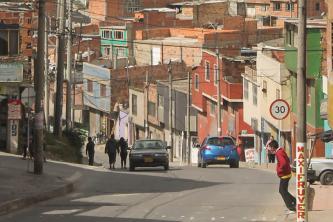
21 February 2018
Bogotá is the best place to observe how everyday mobility can support individual opportunities. Or at least this is the dominant narrative in academic research and policy reports. However, the peripheral neighborhoods of Bogotá tell a different story. The voices of their inhabitants express how everyday mobilities can negate access to urban opportunities.
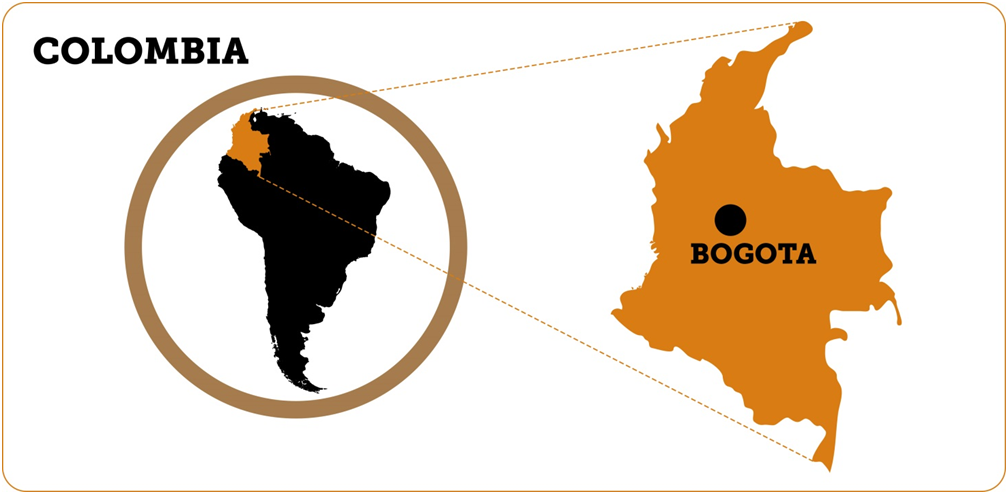
Bogotá is the best place to observe how everyday mobility can support individual opportunities. Or at least this is the dominant narrative in academic research and policy reports when discussing how to tackle mobility issues in the Urban South. Bogotá actually represents how one fairly average city in the Global South can evolve into the gold standard in urban planning.
In this story, Bogotá, like many other cities in the Global South, experiences fast and disordered growth. In Colombia, an imbalanced economy and a decades-long conflict push people from rural areas towards cities. This migratory process fosters the growth of informal settlements, which illegally or semi-legally offer affordable housing and access to basic provisions. Nonetheless, these areas do not allow the public interventions that guarantee basic services such as transport, nor do they provide good access to urban opportunities like services and jobs. This is especially true for the worst-off strata of the population: public transport is the only modal choice available to them, but the quality of a service provided by many operators in competition with each other is very low. All this, in a city that houses around eight million inhabitants, within a municipal area that measures 40 kilometres from north to south.
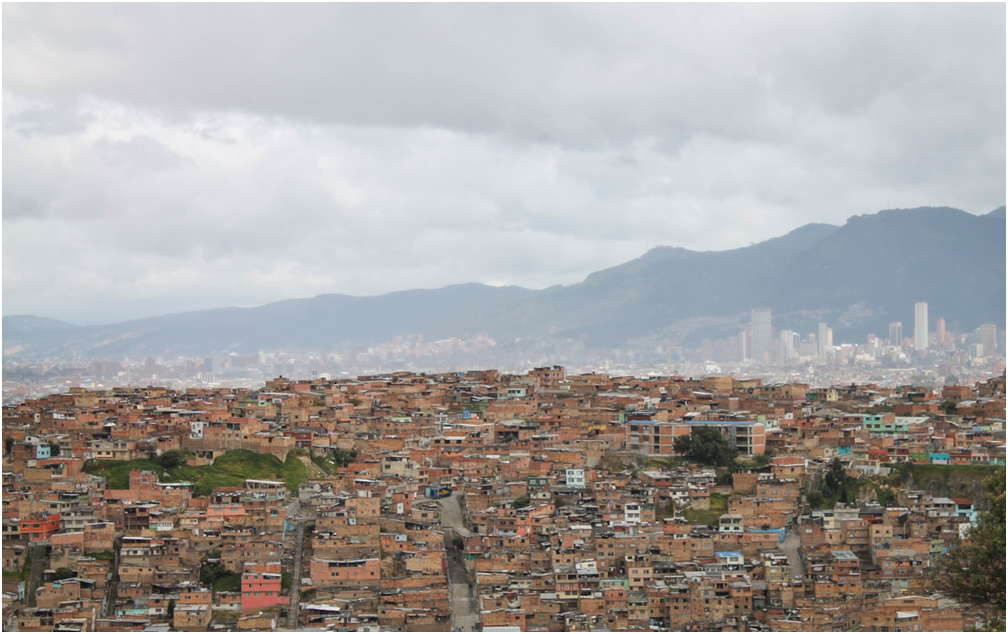
© Picture by Geraldine Rodriguez
In the midst of this problematic situation, an urban mobility strategy changes everything. In the year 2000 TransMilenio, a bus rapid transit system, starts its operation. The project is intended to offer a more reliable public transport service both in the centre and in the peripheries, serving different social groups, by requiring lower construction investments than those for a subway system. The areas not directly served by the network can reach the BRT thanks to integrated bus lines.TransMilenio is not simply intended to improve the public transport service (as it does), but rather to provide an opportunity for social inclusion: according to mayor Peñalosa, it is supposed to be a place where citizens would meet as equals in an environment that respects human dignity. Therefore, when organisations such as UN Habitat promote mobility-related interventions for fostering social inclusion in the Urban South, the case of Bogotá is often presented as a successful reference model. Also official surveys seem to confirm such success: according to the 2011 municipal mobility survey, lower and middle classes in Bogotá – more than 90% of the local inhabitants - tend to move mainly by public transport and TransMilenio.
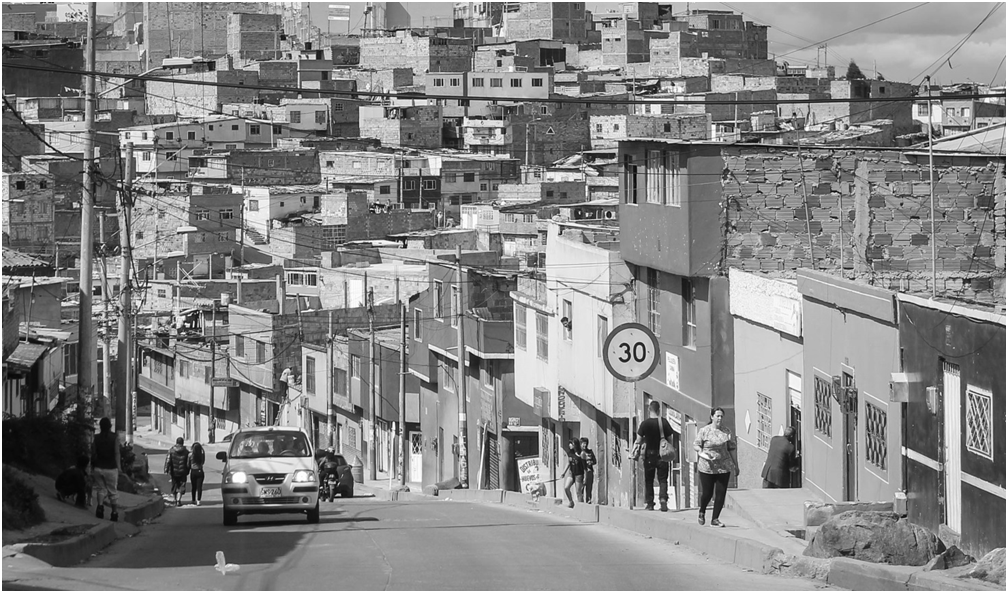
© Picture by Geraldine Rodriguez
However, the peripheral neighbourhoods of Bogotá tell a different story. Most of the inhabitants do not benefit much from the urban bus network due to its reduced ability to connect marginal areas of the city withneighbourhoods where significant opportunities for education, health, work and leisureexist. The everyday mobility experiences of their inhabitants reflect this, showing how the ability to take advantage of urban opportunities strongly depends on one's own mobility. As illustrator Lizeth Leon Borja notes, Bogotá is an archipelago without sea – a collection of neighbourhoods isolated from each other due to a deficient transport system. The city of TransMilenio and the marginal city appear thus as two opposite faces of Bogotá. Let’s move to two areas of the periphery to hear this tale of the other Bogotá.
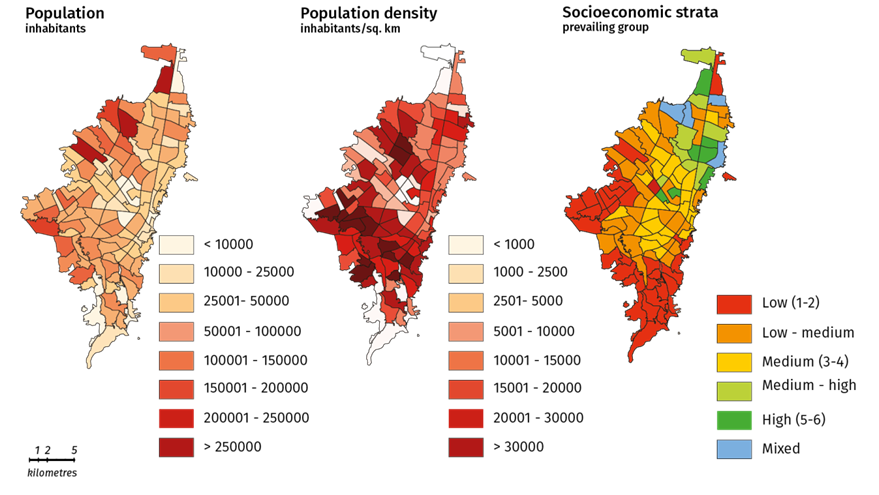
© Map by Giovanni Vecchio
This Bogotá is located mainly in the southern and eastern part of the city. Informal settlements prevail in this area, characterized by higher elevation and large distances from the city centre; moreover, these areas have the highest densities of inhabitants and are home to the worst-off groups. The first neighbourhood of our work is La Merced del Sur, which has grown since the 1950s thanks to the presence of mines and furnaces (for example, here were produced the bricks largely used to construct many buildings of Bogotá) and occupies a quite favourable position in the city, one kilometre far from a TransMilenio station. The second area, La Torre is a newer neighbourhood, marked by the arrival of refugees from other Colombian regions fleeing the internal armed conflict; it is then characterized by a more marginal position, as well as by the lack of significant resources. The voices of some inhabitants, collected in interviews, tell how everyday mobilities allow (or negate) access to urban opportunities, what activities are valuable to them, where these activities occur, their mobility practices and the perceptions associated with the experiences of mobility.
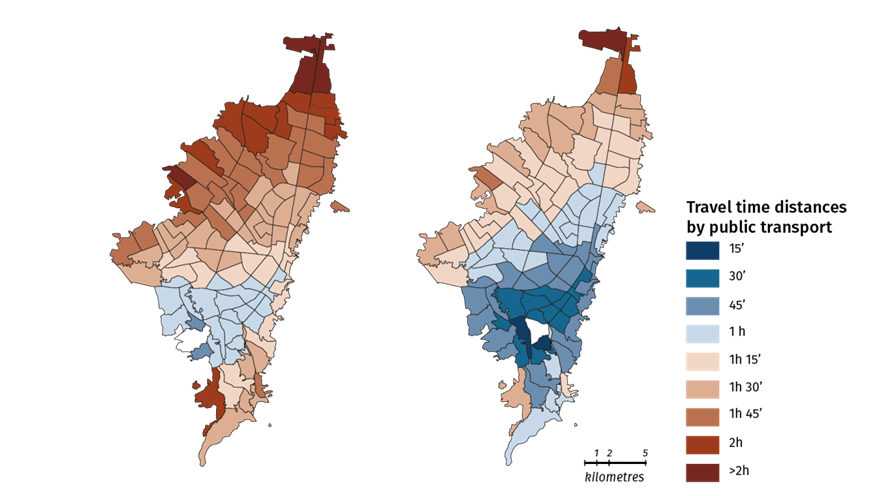
Travel time distances by public transport for the neighbourhoods of La Torre (left) and La Merced del Sur (right)(© Map by Giovanni Vecchio)
Most of the tasks refer to the fulfilment of everyday needs, for oneself and family: going to work, shopping or taking children to schools. These activities emerge as the tasks people value most and, apparently, everything works well:
However, despite being valued activities, these are nonetheless those which satisfy basic needs. Richer mobility opportunities would probably allow the accomplishment of other valued activities. For example, La Torre is mainly inhabited by people who fled the decades-long Colombian conflict and who need to reach administrative offices situated in the distant city centre to follow the bureaucratic processes related to the economic assistance for refugees. Meanwhile, in La Merced – the neighbourhood close to a TransMilenio station – a greater number of people are involved in education (like workers who also attend university courses) and recreational activities. The different social composition of the neighbourhood generates different needs, and different access to the public transport system defines diverse opportunities for accomplishing valued activities..
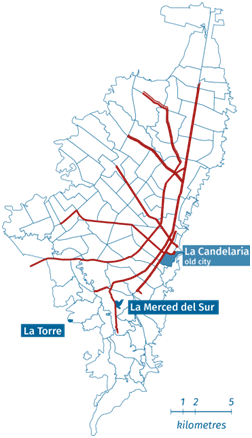
© The location of the two neighbourhoods within Bogotá and in relationship with the TransMilenio network (in red)(© Map by Giovanni Vecchio)
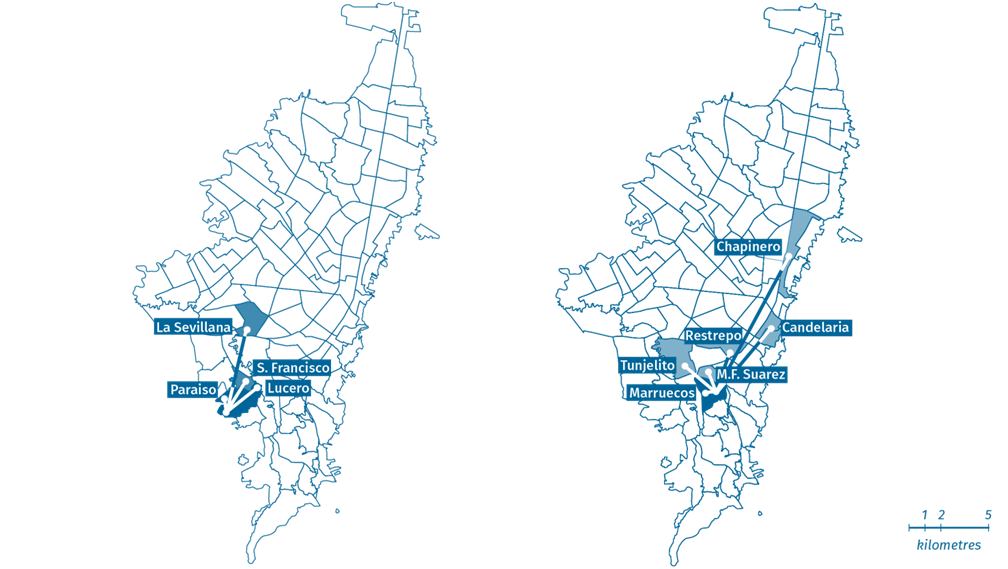
© Main area of interaction for the neighbourhoods of la Torre (left) and La Merced del Sur (right)(© Map by Giovanni Vecchio)
The most recurrent activities take place within the living areas – that is to say, inside the neighbourhood or in its proximity.While shops and basic facilities such as primary schools are usually available at the neighbourhood level, jobs and services (like health and social care) are to be found in neighbouring areas. The distant center and the rich northern part of the city instead are home to most formal jobs, higher education institutions and welfare facilities, which thus are accessible only if a person is willing to travel long hours by bus. For each neighbourhood, the parts of the city that are accessible are significantly different: in La Torre, these are confined to the marginal southern part of the city and are made up of a few neighbouring areas, while in La Merced access is greater and includes parts of the city centre. We may explain such differences by referring to the location of the two neighbourhoods or to the socioeconomic condition of their inhabitants, but the interviewees in La Torre suggested that this was due to either the absence of transport, its price, the long travel times, and a lack of safety and comfort. Regarding the latter, one interviewee noted, ‘travel by public transport provides“sauna and massage” … passengers push you and the vehicles can be quite hot’.
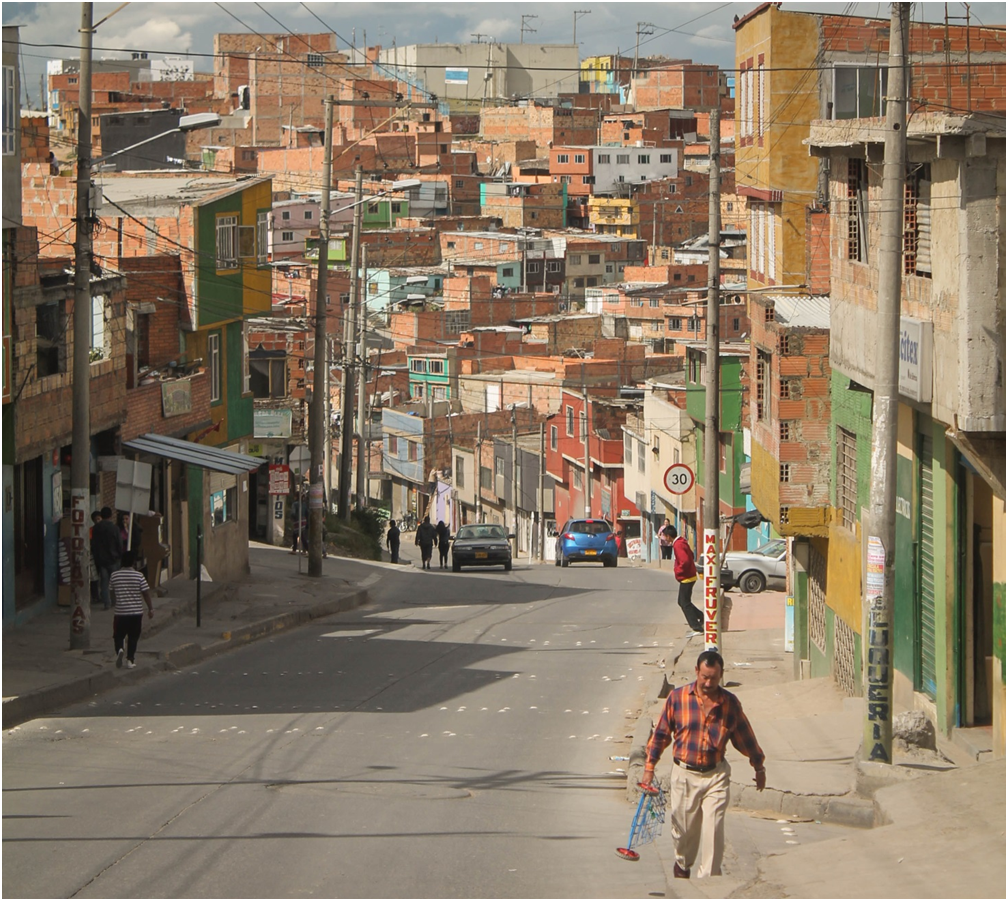
© Picture by Geraldine Rodriguez
In both neighbourhoods people mainly moveby public transport and walking. La Merced privileges the use of the bus rapid transit (due to a nearby station and the lack of regular bus services), while La Torre mainly relies on the regular buses of the integrated public transport network. Interestingly, both areas lack direct public transport connections to the adjoining neighbourhoods or the closest massive transport infrastructures, so that long walks or informal services such as 'shuttle' services provided by small vans (precious to overcome the local steep slopes), are required to reach public transport stops. When public transport is absent or unaffordable, people rely on walking to accomplish their tasks despite the inconvenience of such modal choice: some inhabitants describe their walks as an experience made of absent sidewalks, polluted air, dangerous crossroads, and roads unsafe due to the presence of homeless people and drug addicts.
Mobility emergesas an unpleasant experience from almost any interview.Interviewees remarked, for example, on the unreliability of public transport and the difficulty of travelling with children. Public transport is unreliable and does not provide much comfort:
Even walking is associated with negative experiences and conditions of unsafety:
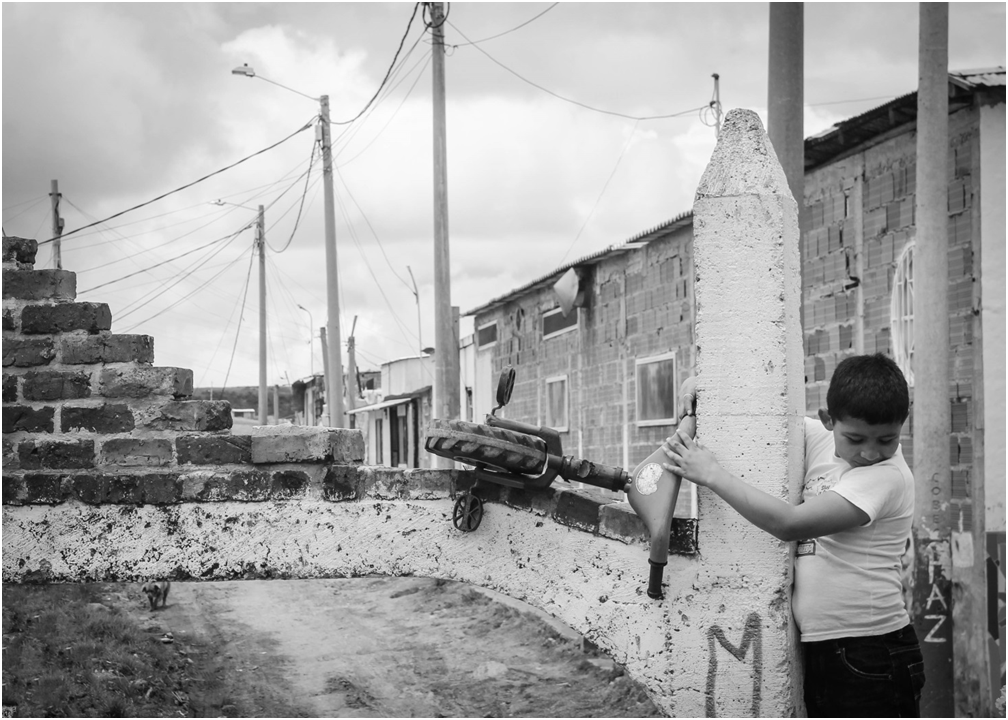
© Picture by Geraldine Rodriguez
It may thus come as a surprise that, despite such tales, the inhabitants of La Merced del Sur and La Torre do not have a negative perception of the opportunities available to them.
The limitations of mobility opportunities do not seem to limit the ability to accomplish valued tasks.Marisol perceives distance as a factor that prevents her from taking advantage of the opportunities offered by other areas of the city; nonetheless, she states that she lives happily – which could be a sign of either her resignation to the status quo, or her ability to fulfil whatever activity she considers important. Probably this is because urban mobility systems only partially affect the individual’s ability to reach desired destinations and activities. In most cases in fact, people seem to develop adaptive practices to pursue their individual life strategies, like walking long distances or concentrating various activities in nearby locations. In a sense, people move despite the current mobility system. The inhabitants of La Torre and La Merced del Sur thus haveaccess to some opportunities that are relevant to them, but this is not primarily thanks to the formal efforts of planning.
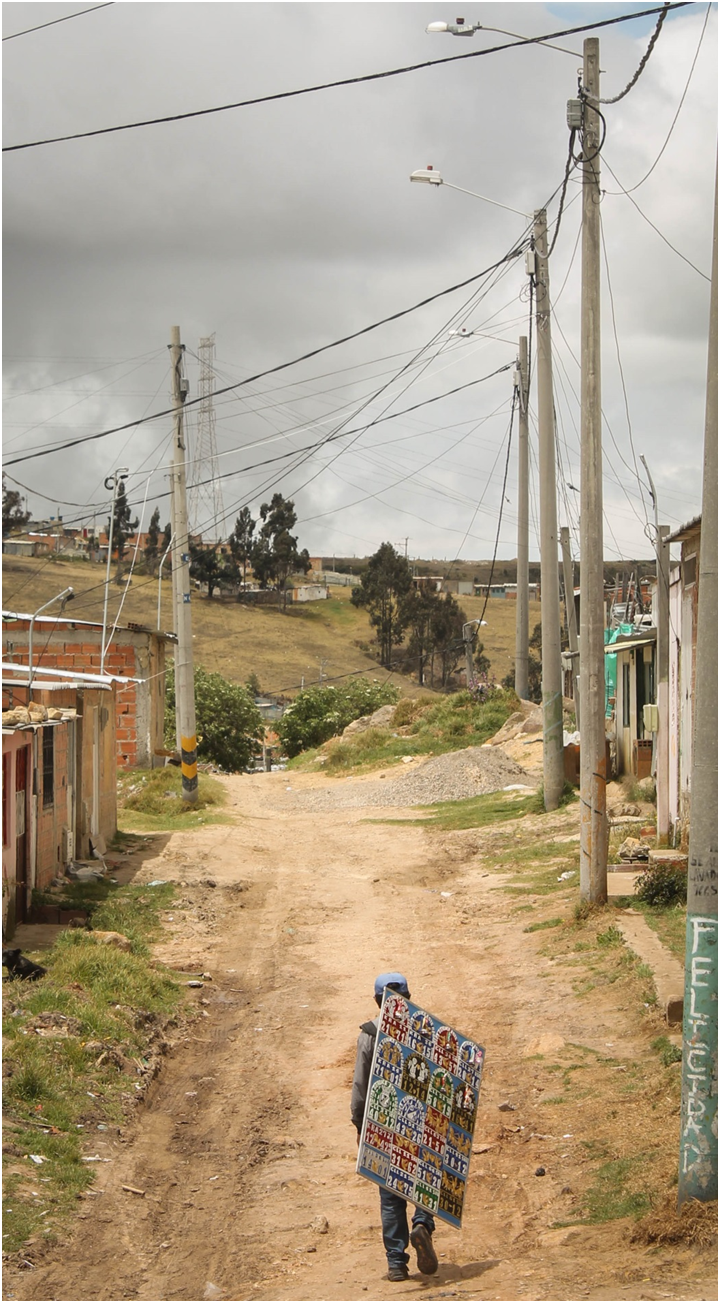
© Picture by Geraldine Rodriguez
The tale of this marginal Bogotá questions the shining image promoted worldwide, according to which the TransMilenio has transformed the mobility of a chaotic Urban South metropolis. The current mobility system allows people to access those opportunities that address primary needs and take place at a local dimension, since people experience difficulties in accessing other parts of the city and the opportunities they offer.
The limitations of the BRT system in guaranteeing wide access to urban opportunities for all suggests new courses of action towards socially and environmentally sustainable forms of mobility, which could be meaningful for both Northern and Southern urban settings. The tale of the two cities of Bogotá suggests that massive interventions in public transport infrastructures need to be complemented by other planning measures (thereby promoting alternative modal choices), or perhaps replaced by a different logic. Rather than providing transport to take people to locations where valued opportunities exist, jobs, shops, schools and health centres could be brought to these people.
Despite its peculiar spatial dimensions and socioeconomic conditions, the case of Bogotá shows once more the need to focus planning efforts on the uses of mobility – that is to say, planning for accessibility, defining it as the potential for activity participation. Urban mobility is in fact crucial for accomplishing whatever activity we have reason to value, providing us with the opportunities to live a dignified life.
Ultimately, and no matter what transport system helps them (or not), the people of Bogotá proudly struggle to achieve what matters to them, as a song by a Colombian alternative music band acknowledges with much better words than mine:
Cuando voy por la ciudad las cosas se confunden,
Atravieso la ciudad a ver que se me ocurre
De píe viendo al frente; de píe siempre de píe.
(When I go across the city things are confused,
I cross the city to see what happens,
Standing, looking in front of me; standing, always standing.)
Systema Solar, Sin oficio
Giovanni Vecchio
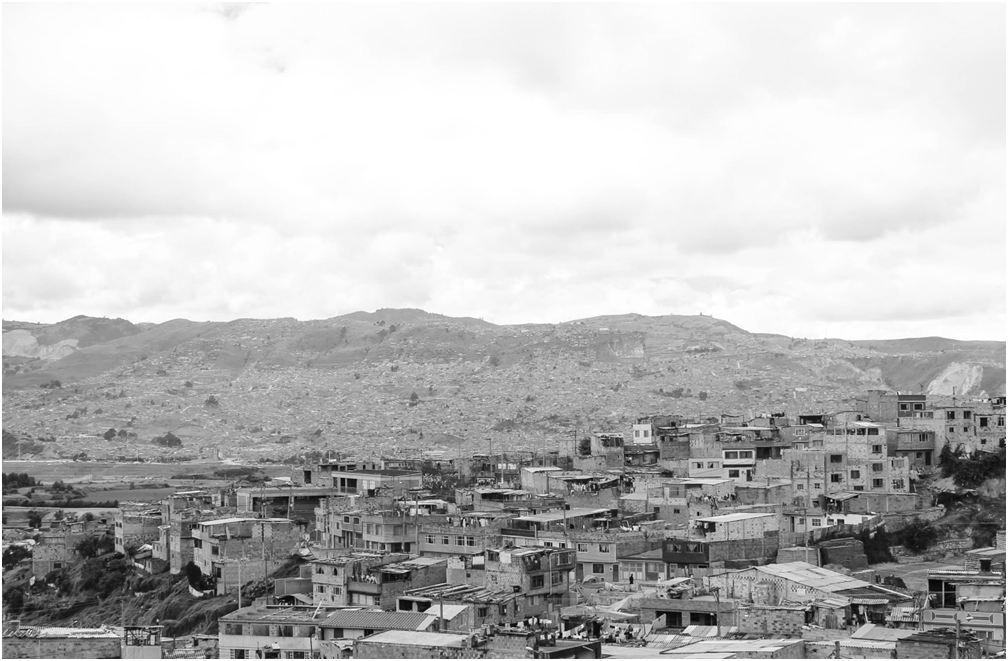
© Picture by Geraldine Rodriguez
For the Mobile Lives Forum, mobility is understood as the process of how individuals travel across distances in order to deploy through time and space the activities that make up their lifestyles. These travel practices are embedded in socio-technical systems, produced by transport and communication industries and techniques, and by normative discourses on these practices, with considerable social, environmental and spatial impacts.
En savoir plus x
Southern Diaries by Forum Vies Mobiles are licensed under a Creative Commons Attribution-NonCommercial-ShareAlike 3.0 France License.
Permissions beyond the scope of this license may be available at contact.
Other publications